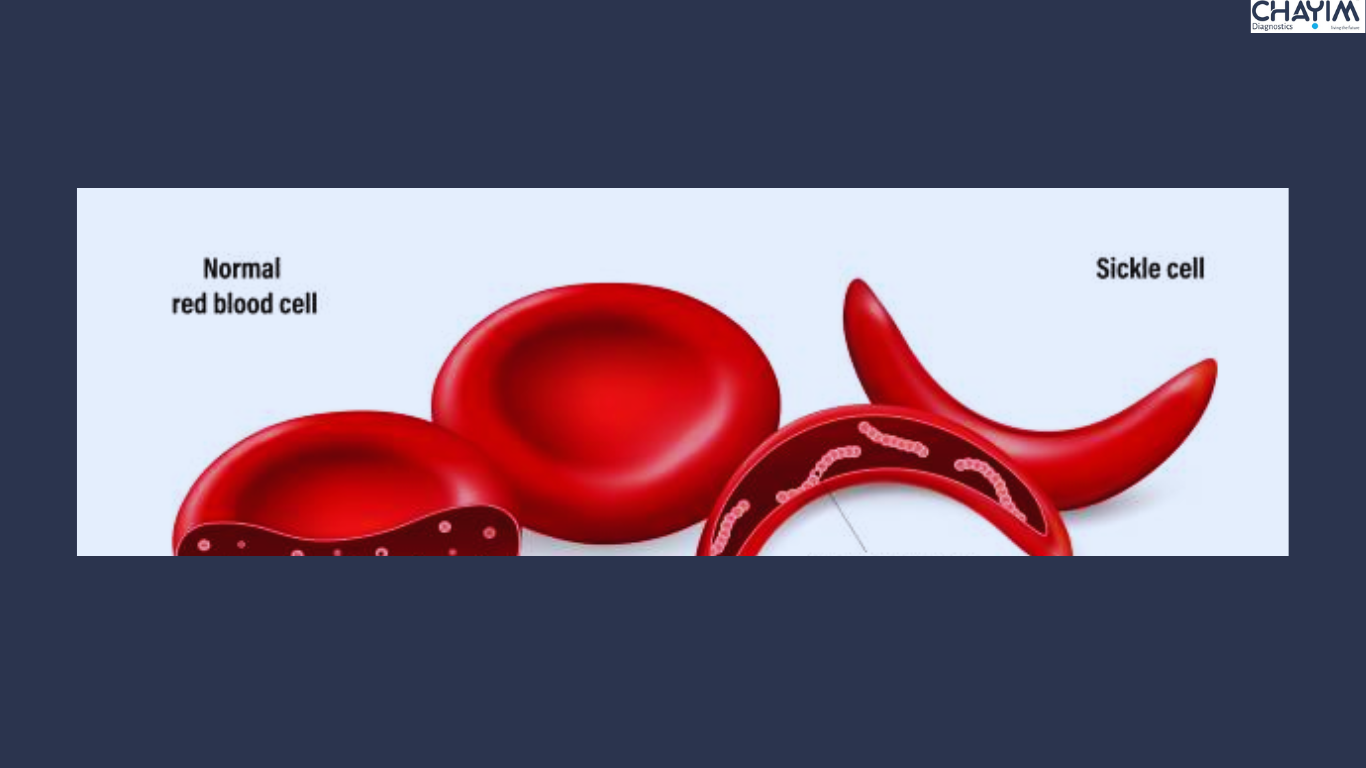Sickle Cell Disease

Sickle Cell Disease (SCD) primarily arises from a genetic mutation that causes hemoglobin to clump together, leading to misshapen, sticky red blood cells that resemble a sickle. These sickle-shaped cells can block blood flow, causing pain, anemia, and other serious health problems.
According to The World Health Organization, sickle cell disease affects more than 300,000 babies globally and its prevalence in Nigeria is between 20 – 30%. Dehydration, infection, cold temperatures, tobacco and other, exposure can trigger attacks.
This blog will delve into understanding what sickle cell disease is, and how early detection is crucial as it allows for timely medical intervention and management, which can significantly reduce the frequency and severity of sickle cell-related complications, including infections, pain crises, and organ damage.
How Sickle Cell Occurs
Sickle Cell Disease (SCD) happens because of a change in the HBB gene. The HBB gene is a part of your DNA that tells your body how to make hemoglobin, the protein in red blood cells that carries oxygen. Hemoglobin has two parts: alpha globin and beta globin. The change in the HBB gene affects the beta globin part, causing the body to make a faulty version called hemoglobin S (HbS).
When a person inherits two sickle cell genes (For example from parents having AS genotype), they are most likely to have Sickle Cell Anemia (SS genotype), the most severe form of SCD. If a person inherits one sickle cell gene and one normal gene (For example from parents having AS and AA genotype), they are carriers, known as having sickle cell trait (AS genotype). Carriers usually do not have symptoms of the disease but can pass the gene to their offspring.
Symptoms of Sickle cell Disease:
This form is not linked to alcohol consumption but often correlates with obesity, insulin resistance, and metabolic syndrome.
Sickle cell disease symptoms may vary from person to person. Some people have mild symptoms, while others develop more serious complications. Common symptoms include:
- Chronic Anemia: Persistent low levels of hemoglobin due to the rapid breakdown of sickle-shaped red blood cells, leading to fatigue, weakness, jaundice and skin paleness.
- Pain crises: Sickle-shaped cells obstruct blood flow by lodging in blood vessels, which can cause sudden episodes of pain in various body parts, most often in the chest, arms, and legs. Painful swelling in the fingers and toes can also affect infants and young children.
- Increased risk of infections: This occurs due to spleen damage from sickle cells, which impairs the body’s ability to fight bacteria.
- Acute Chest Syndrome: A life-threatening complication characterized by chest pain, fever, and difficulty breathing, often triggered by infection or tissue
- Stroke: This occurs when there is a blockage of blood flow to the brain.
- Organ Damage: Long-term damage to organs such as the kidneys, liver, and heart due to chronic lack of oxygen and blood flow.
- Priapism: Sickled cells in your penis can cause a persistent, painful erection (priapism). In addition to causing pain, priapism can lead to permanent damage and erectile dysfunction. If an episode lasts longer than four hours, it is considered a medical emergency.
Genotypes that form Sickle cell disease
These genotypes include:
- Sickle Cell Anemia (HbSS): This is the most severe and it occurs when two sickle cell genes form from parents who have AS genotype.
- Sickle Hemoglobin-C Disease (HbSC): This occurs from parents who have AS and AC genotype. It is a milder form of the disease.
- Sickle Hemoglobin-D Disease (HbSD): This can occur from parents who have either AS or SS genotype and one hemoglobin D gene. It is typically milder than HbSS but can still include pain crises and anemia.
- HbSβ-Thalassemia: This occurs from parents who have sickle hemoglobin (AS or SS genotypes) and beta-thalassemia. This form of the disease can range from mild to severe depending on the type of thalassemia.
According to The World Health Organization, sickle-cell disease can be managed by simple procedures which includes:
- High fluid intake
- Eating healthy diet
- Taking folic acid as prescribed by your health physician.
- Seeing a professional health physician regularly.
The goal is to manage and control symptoms, and to limit the number of crises. People with sickle cell disease require regular monitoring, even outside of crisis periods. Premarital testing plays a vital role in helping couples make informed choices. Since sickle cell disease is an inherited condition, by undergoing counseling and testing before marriage, couples can assess their risk of having children with SCD.
As a health organization who cares about the wellbeing of others, Chayim diagnostics supports the goal to increase public knowledge and understanding of sickle cell disease. Know your Genotype today and save lives.


Responses